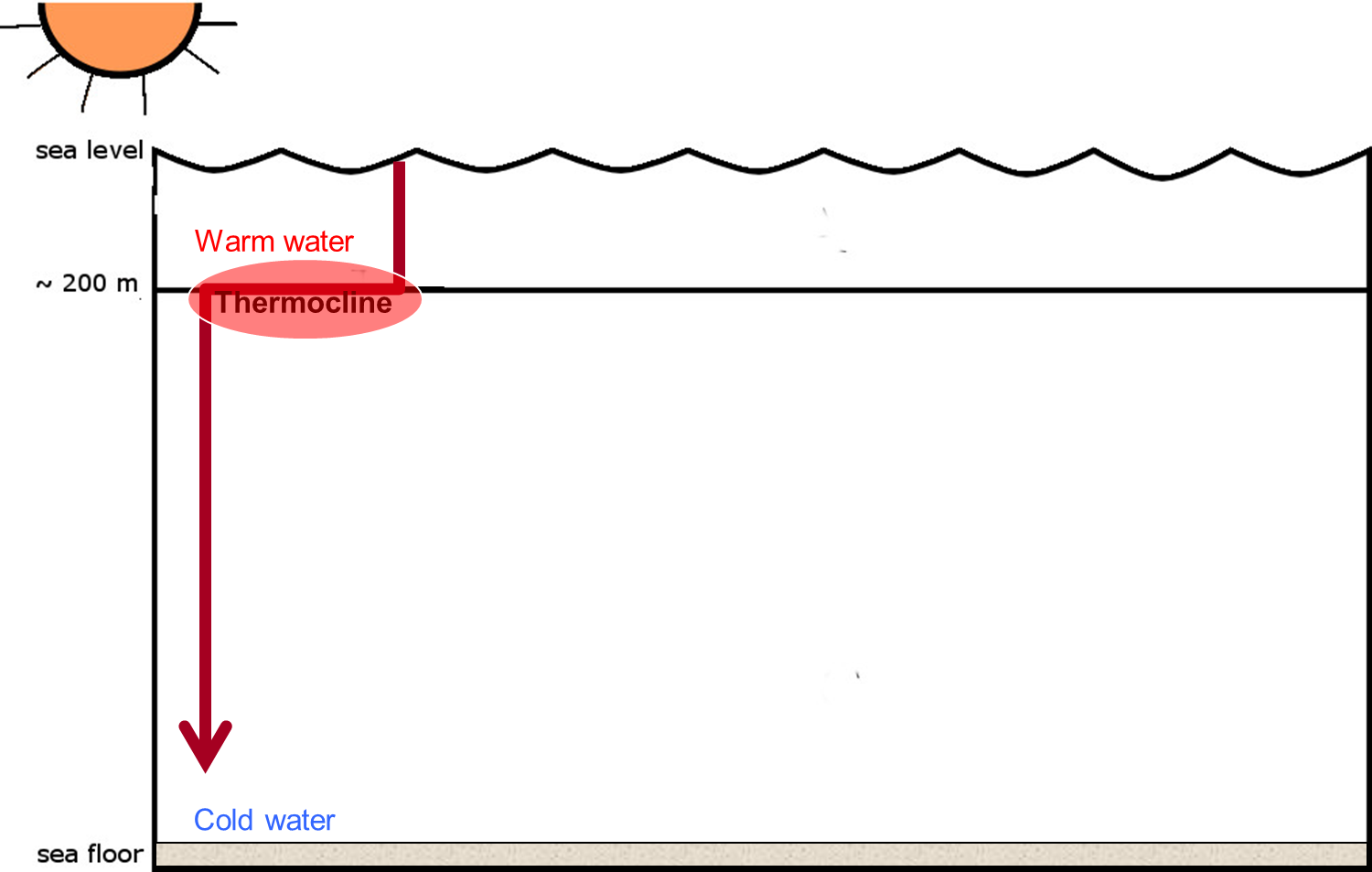Properties of Seawater: Temperature
Sea water is warmed by sunlight. Sunlight can penetrate to a maximum of 200 meters; this layer is called the Photic Zone. Below 200 meters* there is no light, and this layer is called the Aphotic Zone. As a result, temperature layering produced in ocean. The Photic Zone is warm, and the Aphotic Zone is cold. As one descends down into the deeper parts of the ocean, the temperature shifts from warm to cold. This zone of rapid temperature change is called thermocline. In general, warm water over cold water is stable and cold water over warm water is not stable.
The thermocline varies with location. A permanent main thermocline is present year round in the lower and mid latitudes. The main thermocline is roughly 100m deep. The top of the thermocline in lower latitudes is located in shallower water than in the mid-latitudes, so the thermocline shifts a large amount over a short distance. In the polar regions the shift in temperature between the warmer surface waters and the colder deeper waters is not very much, so the thermocline is essentially absence in the higher latitudes.

